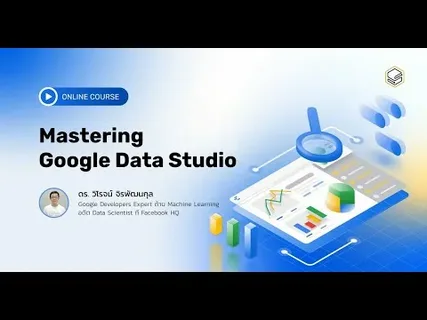Imagine walking into a vast art gallery where every canvas tells a story, yet without the proper lighting and framing, the beauty remains hidden. Data works in much the same way. Raw numbers are like unframed paintings—powerful but difficult to appreciate. Google Data Studio acts as the curator, arranging these masterpieces with clarity, colour, and context so they can be truly understood. To master this tool, one needs more than technical know-how—it requires vision, precision, and a compelling narrative.
The Art of Connecting Data Sources
The first skill is learning to weave together multiple data sources, much like stitching fabric into a seamless quilt. Google Data Studio allows connections to Google Analytics, BigQuery, spreadsheets, and external platforms. The challenge is not merely linking them but ensuring harmony between them. Think of it like orchestrating a symphony—each instrument contributes, but the conductor ensures no note is out of place. Professionals often train in structured environments such as a Data Analytics Course in Hyderabad, where the importance of blending disparate sources is emphasised through real-world exercises. Once this skill is mastered, the once chaotic rows of data begin to flow like a well-composed melody.
Designing Dashboards with Purpose
Dashboards in Data Studio are not just charts and tables; they are stories in motion. Building them without intent is like designing a house with doors leading nowhere. The essential skill lies in crafting dashboards that guide the viewer through a narrative—from a striking opening number to a compelling conclusion. Good design demands balance: using colours thoughtfully, choosing the right chart type, and limiting clutter. Learners in a Data Analytics Course often practise this by translating case studies into visual journeys, focusing on clarity rather than decoration. The goal is to ensure that decision-makers leave the dashboard with insight, not confusion.
Mastering Calculated Fields
Numbers, when left untouched, only scratch the surface of what’s possible. Calculated fields are the chisels that sculpt raw data into meaningful information. With them, you can combine columns, create ratios, or even define performance metrics tailored to unique business needs. This skill demands both mathematical intuition and business understanding. For example, turning revenue and cost data into profit margins reveals a richer story. Professionals who dive deep into this practice often describe it as unlocking a secret language within Data Studio. Like a chef mixing ingredients to discover new flavours, analysts discover new truths hidden within numbers.
Applying Filters and Controls
Imagine reading a novel where every character speaks at once. Overwhelming. Filters and controls in Data Studio enable viewers to focus on specific characters in the story by selecting regions, timeframes, or categories. It’s an act of precision, allowing each audience to tailor the report to their needs. Skilled analysts understand not just how to add filters, but how to anticipate what the reader will want to explore. They build dashboards that invite curiosity without overwhelming users with too many choices. This interactivity is often where raw reports transform into living tools, enabling decisions that feel personalised and immediate.
Storytelling with Data Visualisation
The heart of Google Data Studio mastery lies in storytelling. A scatter plot may reveal relationships, a time series might uncover patterns, but only when combined thoughtfully do they illuminate the whole narrative. Storytelling in data visualisation is not about dazzling effects but about honesty and clarity. Each graph must earn its place on the page. Analysts who excel in this skill learn to step into the shoes of their audience, asking, “What decision needs support?” What question needs answering? In doing so, they shift from being mere technicians to trusted advisors, turning data into wisdom.
Continuous Exploration and Practice
Just as a painter never truly finishes learning their craft, mastering Google Data Studio requires ongoing practice and refinement. The platform evolves, and with it, so must the analyst’s approach. Experimentation is key—testing new chart types, exploring connectors, and refining designs to achieve optimal results. Those who complement their practice with formal training, such as a Data Analytics Course in Hyderabad, often gain structured pathways to stay ahead. What distinguishes the true master is not the tools they use, but the persistence and curiosity that drive them to explore beyond the obvious.
Conclusion: From Numbers to Narratives
Google Data Studio is not a mere reporting platform—it is the canvas, the brush, and the frame through which data becomes art. The essential skills—connecting data sources, purposeful design, calculated fields, filters, and storytelling—form the palette of a skilled analyst. Each report created is not just a dashboard but a narrative that empowers decision-makers to act with confidence. For those who commit to learning, whether through practice or a Data Analytics Course, the reward is more than technical proficiency; it is the ability to give voice to silent numbers and transform them into stories that shape strategy.
ExcelR – Data Science, Data Analytics and Business Analyst Course Training in Hyderabad
Address: Cyber Towers, PHASE-2, 5th Floor, Quadrant-2, HITEC City, Hyderabad, Telangana 500081
Phone: 096321 56744


